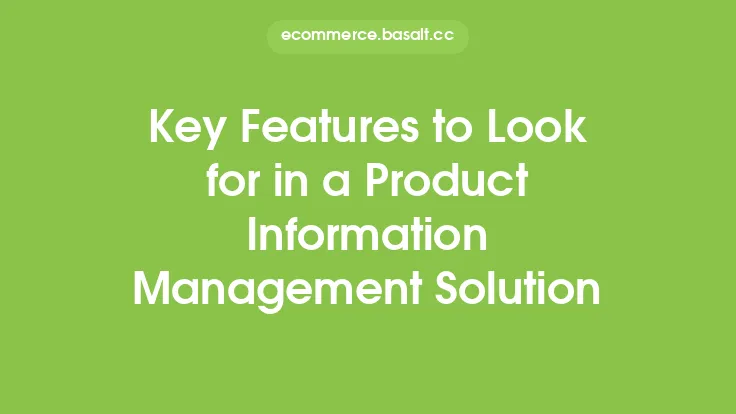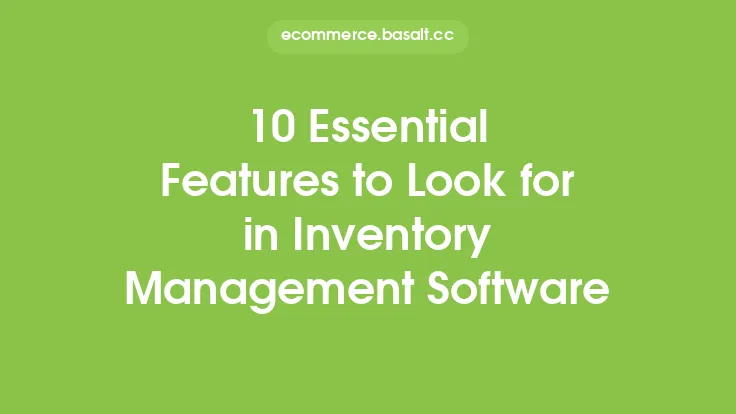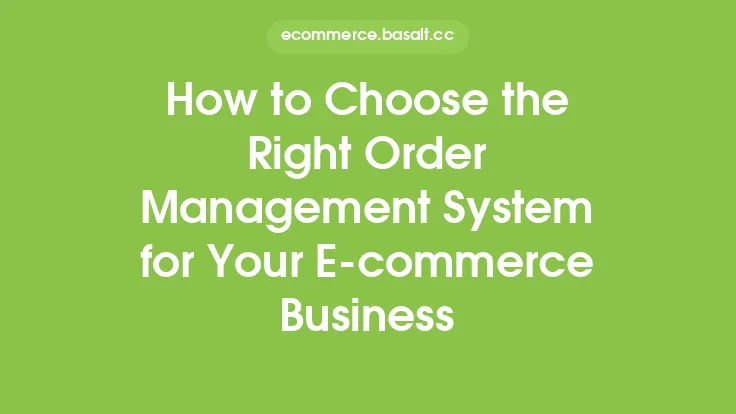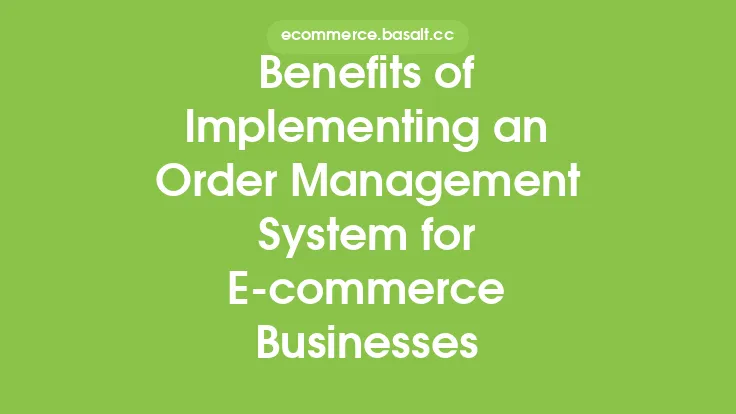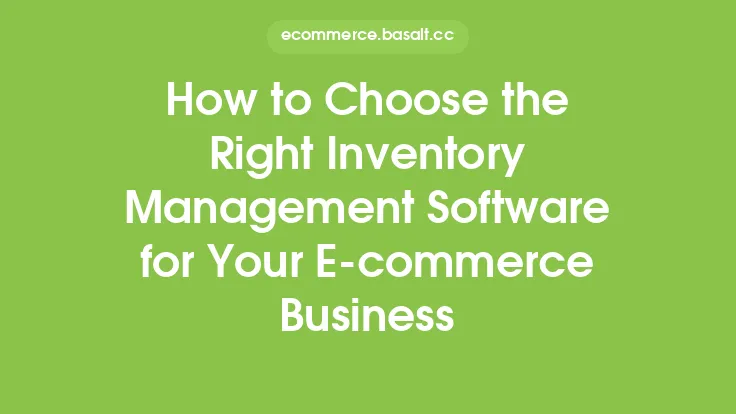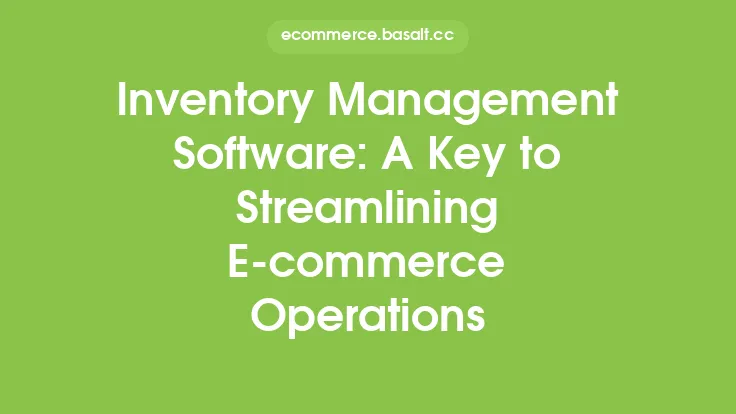When it comes to managing orders in an e-commerce business, having the right tools and features is crucial for efficient and effective operations. An Order Management System (OMS) is a software solution that helps businesses to manage their orders from receipt to fulfillment, and it is essential to choose a system that has the right features to meet the specific needs of the business. In this article, we will explore the key features to look for in an Order Management System.
Core Functionality
A good OMS should have core functionality that enables it to manage orders from start to finish. This includes order receipt, processing, and fulfillment. The system should be able to handle various types of orders, including online, offline, and phone orders. It should also be able to manage different payment methods, such as credit cards, PayPal, and bank transfers. Additionally, the system should have a robust inventory management system that can track stock levels, manage product variants, and prevent overselling.
Inventory Management
Inventory management is a critical component of an OMS. The system should be able to track inventory levels in real-time, across multiple warehouses and locations. It should also be able to manage product variants, such as size, color, and style, and track inventory levels for each variant. The system should also have a low-stock alert feature that notifies the business when inventory levels fall below a certain threshold. This enables the business to replenish stock levels in a timely manner and prevent stockouts.
Order Routing and Fulfillment
An OMS should have a robust order routing and fulfillment system that can route orders to the most suitable fulfillment location. The system should be able to consider factors such as shipping distance, inventory levels, and fulfillment costs when routing orders. It should also be able to manage different fulfillment options, such as drop shipping, in-store pickup, and same-day delivery. The system should also have a shipping integration feature that enables it to integrate with various shipping carriers, such as UPS, FedEx, and USPS.
Returns and Refunds
Returns and refunds are an inevitable part of e-commerce, and an OMS should have a robust returns and refunds system. The system should be able to manage returns and refunds from start to finish, including receiving and processing returns, inspecting returned products, and issuing refunds. The system should also be able to track returns and refunds, and provide analytics and insights on return rates and refund amounts.
Reporting and Analytics
A good OMS should have a robust reporting and analytics system that provides insights into order management operations. The system should be able to track key performance indicators (KPIs) such as order fulfillment rates, shipping times, and return rates. It should also be able to provide analytics on sales, revenue, and customer behavior. The system should also have a customizable reporting feature that enables businesses to create custom reports based on their specific needs.
Integration and Scalability
An OMS should be able to integrate with other e-commerce systems, such as e-commerce platforms, marketplaces, and ERP systems. The system should have an open API that enables it to integrate with other systems, and it should also have pre-built integrations with popular e-commerce platforms. The system should also be scalable, and able to handle increasing volumes of orders and traffic. It should be able to scale up or down as needed, and it should be able to handle peak periods and seasonal fluctuations.
Security and Compliance
An OMS should have robust security and compliance features that protect sensitive customer data and prevent fraud. The system should be PCI-compliant, and it should have features such as encryption, access controls, and audit logs. The system should also be compliant with other regulatory requirements, such as GDPR and CCPA. The system should also have a secure payment processing feature that enables it to process payments securely and prevent fraud.
User Experience
A good OMS should have a user-friendly interface that enables users to easily manage orders and fulfillments. The system should have a intuitive dashboard that provides a clear overview of order management operations, and it should have features such as search, filtering, and sorting that enable users to quickly find and manage orders. The system should also have a mobile-responsive design that enables users to access the system from anywhere, on any device.
Customer Support
An OMS should have robust customer support features that enable businesses to provide excellent customer service. The system should have features such as order tracking, shipping updates, and return tracking that enable customers to track their orders and stay informed. The system should also have a customer portal that enables customers to view their order history, track their orders, and contact customer support. The system should also have a knowledge base and FAQs that provide answers to common customer questions.
